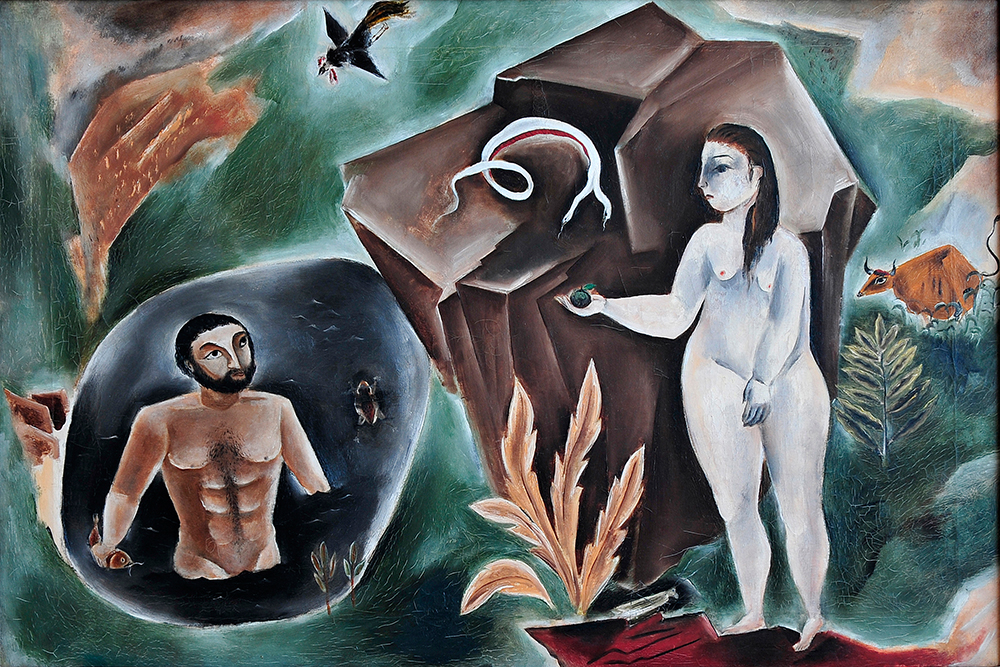At almost 17, Yasuo Kuniyoshi migrated alone to the United States. Though he is considered an esteemed American artist—spending his career in Los Angeles and New York—Kuniyoshi was never allowed to become an American citizen. Despite this fact and the Pearl Harbor era he lived in, Kuniyoshi was incredibly pro-American, and his artistic style is an amalgamation of East and West.
The Artistic Journey of Yasuo Kuniyoshi at the American Art Museum features 66 of Kuniyoshi’s works—including Kuniyoshi’s complete set of self-portraits. The works featured in this collection are all oil paintings or black ink drawings. While the oil paintings are traditionally Western, the black ink drawings are a reminder of Kuniyoshi’s Eastern roots. His art comes in three stages, paralleling the human experience. His early art is filled with youth, optimism, and images of children. During his second and more worldly period, his art hints at an ungraspable sophistication. Finally, his late work is fixated on disillusionment and demise.
The opening piece of the exhibit is “Self-Portrait of a Photographer”—a strong piece completed in oil that asserts Kuniyoshi’s Okayama heritage. His cheekbones are exaggerated, his skin pale white with no hint of pink, his eyes stylized. The second self-portrait in this exhibition, “Self-Portrait of a Golfer,” features Kuniyoshi posed like a samurai yielding a golf-club. The painting is large and confrontational—a second assertion of identity. The third self-portrait, however, is unassuming. It was painted in the middle of World War II and is modest, smaller and less confrontational. The final self-portrait is simply titled “Self Portrait,” done by the teenage Kuniyoshi. The portrait is playful, and Kuniyoshi is featured with a curled mustache and John Lennon glasses.
Kuniyoshi’s tendency to paint untraditional subjects also plays a fascinating role in the exhibition. For instance, this exhibition features the oil paintings “Little Boy Stealing Fruit” and “Little Joe with Cow.” These subjects are unique in the world of art, and the images capture peculiar moments in life. Kuniyoshi is certainly not a “still-life-with-fruit” or a “Madonna-with-Child” kind of artist.
Even in his black ink drawings, like “The Calf Doesn’t Want to Go,” a dreamlike feeling is unavoidable. The piece is a landscape floating in space; a closer view shows the intricate style and delicate touches of fine lines scratched into the ink—a tactile technique that shows Kuniyoshi’s physical engagement with his work, immersed in his own world of dreams.
Kuniyoshi’s art transcends Eastern and Western cultural divisions, and it leaves the viewer with the feeling of a kaleidoscopic heart—in touch with the beauty of all of humanity. Wandering through this exhibit felt much like reading a good book. I even have the feeling Kuniyoshi is the Murakami of the art world, and this exhibit is his 1Q84—his crowning achievement—evoking in us the irrevocable sentimentality of passing time.
American Art Museum
8th and F Streets, N.W.
Open daily from 11:30 a.m.-7:30 p.m.
Photo: American Art Museum





